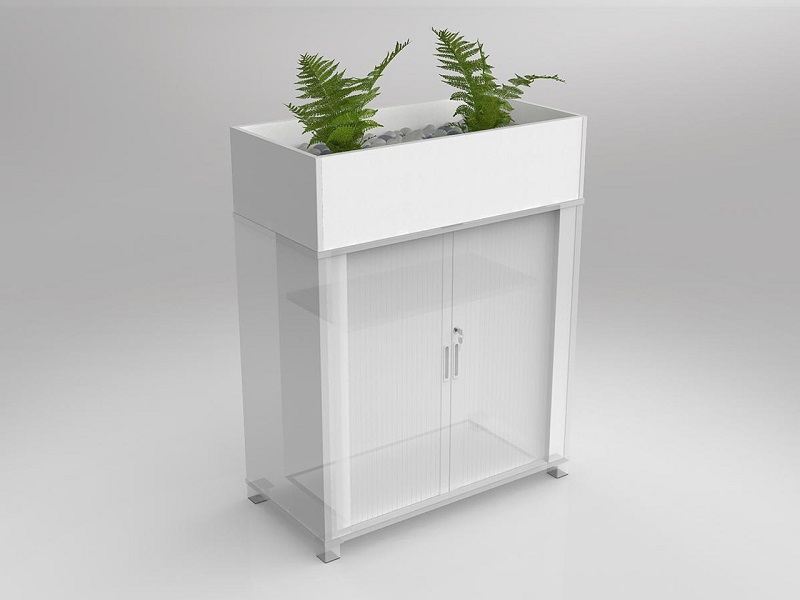Eco-Friendly Offices: Sustainable Solutions for a Greener Workspace
Posted by The Urban Hyve Team on 8th May 2024
In an era where environmental consciousness is paramount, businesses are increasingly turning their attention to creating an eco-friendly office that prioritises sustainability and reduce the carbon footprint. By implementing sustainable solutions in the workplace, businesses can not only contribute to a greener planet but also create a healthier and more productive work environment for their employees.
In this article, we'll explore a range of eco-friendly initiatives and sustainable solutions that can help transform your workspace into an environmentally responsible and socially conscious office.
1. Energy-Efficient Lighting
One of the most effective ways to reduce energy consumption in the office is by upgrading to energy-efficient lighting systems. LED light bulbs use significantly less energy than traditional incandescent bulbs and last much longer; therefore, reducing the need for frequent replacements. Installing motion sensors and programmable timers can further optimise energy usage by automatically turning off lights in unoccupied areas; therefore, contributing to both cost savings and environmental sustainability.
2. Green Building Materials
When renovating or designing office spaces, opting for sustainable and environmentally friendly building materials is key. Look for materials that are recycled, recyclable, or made from renewable resources such as bamboo, cork, or reclaimed wood. These materials not only reduce the environmental impact of construction but also contribute to healthier indoor air quality by emitting fewer harmful chemicals and volatile organic compounds (VOCs).

Annangrove Bamboo Foldable Shelf Plant
3. Waste Reduction and Recycling
Implementing a comprehensive waste reduction and recycling programme is essential for minimising the environmental impact of office operations. Provide designated recycling bins for paper, plastic, glass, and other recyclable materials throughout the office and clearly communicate recycling guidelines to employees. Consider partnering with local recycling facilities or waste management companies to ensure that recyclable materials are properly processed and diverted from landfills.
4. Energy-Efficient Appliances and Equipment
Upgrading to energy-efficient appliances and equipment can significantly reduce energy consumption and operating costs in the office. Look for ENERGY STAR certified appliances such as refrigerators, dishwashers, and printers, which are designed to consume less energy and water while maintaining optimal performance. Additionally, invest in energy-efficient office equipment such as computers, printers, and copiers that automatically enter sleep mode when not in use to conserve energy.
5. Water Conservation Measures
Conserving water is another critical aspect of creating an eco-friendly office environment. Install water-saving fixtures such as low-flow toilets, faucets, and showerheads to reduce water usage and minimise wastewater generation. Encourage employees to adopt water-saving habits such as turning off taps when not in use and reporting any leaks or plumbing issues promptly. Educating employees about the importance of water conservation can also help foster a culture of sustainability in the workplace.
6. Indoor Air Quality Improvement
Improving indoor air quality is essential for creating a healthy and comfortable work environment. Consider incorporating indoor plants into the office space. They act as natural air purifiers by absorbing harmful pollutants and releasing oxygen. Additionally, invest in high-quality air filtration systems and regularly maintain HVAC systems to ensure optimal indoor air quality. Good ventilation and air circulation are also crucial for reducing the concentration of indoor air pollutants and preventing health issues such as allergies and respiratory problems.

Smith Planter Box For Real Plants
7. Alternative Transportation Options
Encouraging employees to reduce their carbon footprint by opting for alternative transportation options is another effective way to promote sustainability in the workplace. Provide incentives such as subsidies for public transportation, bike storage facilities, and carpooling programmes to encourage employees to commute sustainably. Additionally, consider offering telecommuting or flexible work arrangements to reduce the need for daily commuting and alleviate traffic congestion and air pollution.
8. Green Office Policies and Practices
Establishing green office policies and practices is essential for creating a culture of sustainability in the workplace. Develop policies that promote energy conservation, waste reduction, recycling, and sustainable procurement practices. Encourage employee participation and engagement by organising educational workshops, seminars, and sustainability initiatives such as Earth Day events or tree planting activities. Recognise and reward employees who actively contribute to the company's sustainability efforts. Regularly evaluate and update green office policies to align with evolving environmental standards and best practices.
In conclusion
Creating an eco-friendly office is not only beneficial for the environment but also for the employee's health, well-being, and productivity. By implementing sustainable solutions such as energy-efficient lighting, green building materials, waste reduction and recycling programmes, energy-efficient appliances and equipment, water conservation measures, indoor air quality improvement initiatives, alternative transportation options, and green office policies and practices, businesses can reduce their environmental impact and lead by example in promoting sustainability in the workplace. Embrace eco-friendly initiatives and transform your workspace into a greener, healthier, and more socially responsible environment for generations to come.










